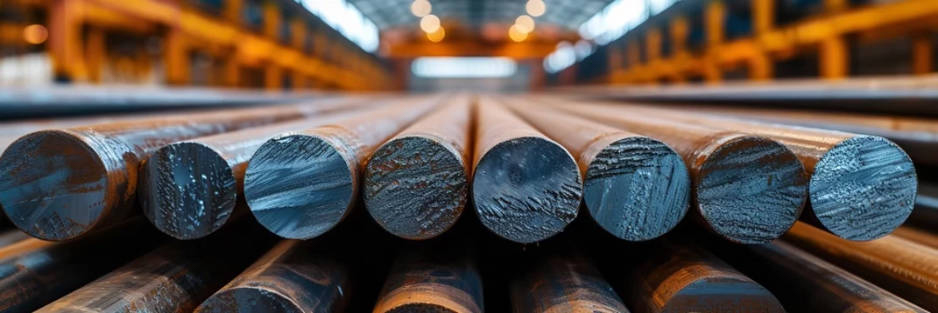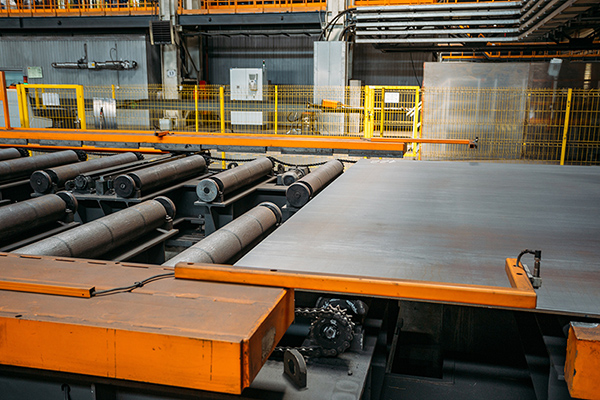
High-quality Carbon Spring Steel
| NO. | GB | JIS G 4801 |
| 1 | 65 | (SUP2) |
| 2 | 70 | |
| 3 | 80 | |
| 4 | 85 | (SUP3) |
| 5 | 65Mn | |
| 6 | 70Mn |
Alloy Spring Steel
| NO. | GB | ISO.683-14 | EN 10089 | JIS G 4801 |
| 1 | 28SiMnB | |||
| 2 | 40SiMnVBE | |||
| 3 | 55SiMnVB | |||
| 4 | 38Si2 | 38Si7 | 38Si7 | |
| 5 | 60Si2Mn | SUP6 | ||
| 6 | 55CrMn | 55Cr3 | 55Cr3 | SUP9 |
| 7 | 60CrMn | 60Cr3 | 60Cr3 | SUP9A |
| 8 | 60CrMnB | SUP11A | ||
| 9 | 60CrMnMo | 60CrMo3-3 | 60CrMo3-3 | SUP13 |
| 10 | 55SiCr | 55SiCr6-3 | 54SiCr6 | |
| 11 | 60Si2Cr | |||
| 12 | 56Si2MnCr | 56SiCr7 | ||
| 13 | 52Si2CrMnN | 52SiCrNi5 | ||
| 14 | 55SiCrV | 54SiCrV6 | ||
| 15 | 60Si2CrV | — | ||
| 16 | 60Si2MnCrV | 60SiCrV7 | ||
| 17 | 50CrV | SUP10 | ||
| 18 | 51CrMnV | 51CrV4 | ||
| 19 | 52CrMnMoV | 52CrMoV4 | 52CrMoV4 | |
| 20 | 30W4Cr2V |
Spring Steel Unique Properties
Spring steel has characteristics such as its ability to resist deformation under high stress due to its strong yield strength and to endure repeated loading without breaking because of its excellent fatigue resistance properties. When treated or coated properly, spring steel also shows corrosion resistance.
The Process of Making Spring Steel
Selecting the Right Raw Materials
Importance of Carbon Content
Choosing the carbon content is essential when selecting raw materials for making spring steel, as it directly impacts the hardness and tensile strength of the end product. The higher the carbon content, the greater the hardness, though it may lead to reduced ductility in the final product.
Alloying Elements in Spring Steel
In addition to carbon levels varying in metal compositions for enhancing properties like flexibility and durability, silicon increases flexibility, while manganese boosts hardening and resistance to wear and tear. Chromium enhances corrosion resistance, while vanadium contributes to increased durability.
Heat Treatment Process
Annealing and Normalizing
Annealing refers to the method of heating steel to a temperature and then allowing it to cool gradually in order to relieve internal stresses and improve its flexibility. Normalizing is similar to annealing but differs in that it entails cooling the steel in ambient air instead of using a slower cooling process, which results in a uniform grain structure that enhances its mechanical characteristics.
Quenching and Tempering
Hardening by quenching is the method of cooling steel using water or oil to increase its hardness level. However, this may lead to brittleness in the material, which is why temper hardening follows as the subsequent step after quench hardening. In this process, the steel is reheated to a lower temperature, aiming for a balance between hardness and toughness in the material.
Forming Techniques for Spring Steel
Hot Forming Methods
Methods like rolling and forging are used to shape spring steel into forms while preserving its mechanical properties intact. In the rolling process, hot steel is passed through rollers to adjust its thickness or alter its shape, whereas forging utilizes forces from hammers or presses to create intricate shapes.
Cold Forming Methods
Methods such as forming, like drawing, entail pulling steel through dies to achieve precise dimensions without the need for heating it up beforehand. Stamping involves the use of dies and punches to cut or mold flat sheets into specific designs or components needed in various applications, all done under room temperature conditions.
Steel strands used in prestressed concrete are high-strength steel materials that aim to improve the strength and durability of concrete structures in different sectors, such as building bridges and large structures, or in water projects and mining activities. They showcase how cold-drawn techniques can be effectively utilized to make robust components, similar to the spring steels found in certain structural applications.
Applications of Spring Steel
Automotive Industry Uses
Spring steel is highly important in the sector because of its remarkable strength and flexibility attributes. It is frequently employed in crafting suspension springs that play a role in shock absorption and ensuring the stability of vehicles. Moreover, spring steel sees use in creating clutch plates, valve springs, and various other parts that demand resistance to fatigue and lasting endurance. The capability of spring steel to endure repeated stress without losing its shape makes it the perfect option for rigorous uses.
Construction and Engineering Applications
In construction and engineering circles, spring steel is highly prized for its strength and ability to bounce back. It’s a choice material for making structural parts that must withstand heavy loads without losing their shape. For example, bridge builders rely on spring steel due to its durability in challenging environments. Additionally, it plays a role in earthquake-resistant building projects by absorbing and dispersing energy during seismic events.
Tools and Equipment Manufacturing
The production of tools and machinery greatly profits from the characteristics of spring steel. Its durability and resistance to wear make it ideal for crafting saw blades and cutting implements that retain their sharpness even with prolonged usage. Additionally, the pliability of spring steel enables the crafting of tape measures, rulers, and other precise devices that necessitate dimensional steadiness. In the manufacturing of heavy-duty equipment, spring steel parts play a role in improving operational dependability.
Promispecial® Specialty Steel Products
Promispecial® provides a variety of special steel products tailored to meet the unique requirements of different industries in the market today. We offer top-notch materials, such as Prestressed Concrete Steel Strands, which are strong steel materials crafted to improve the efficiency of concrete structures by boosting their load-bearing capabilities and longevity in sectors like building bridges, towering structures, and mines.
Spring steel is widely used in industries due to its versatility in meeting tough requirements for strength and durability in applications like automotive systems, construction projects, and tool manufacturing processes. It plays a role in driving progress across different sectors by providing reliable performance even in challenging conditions.

























